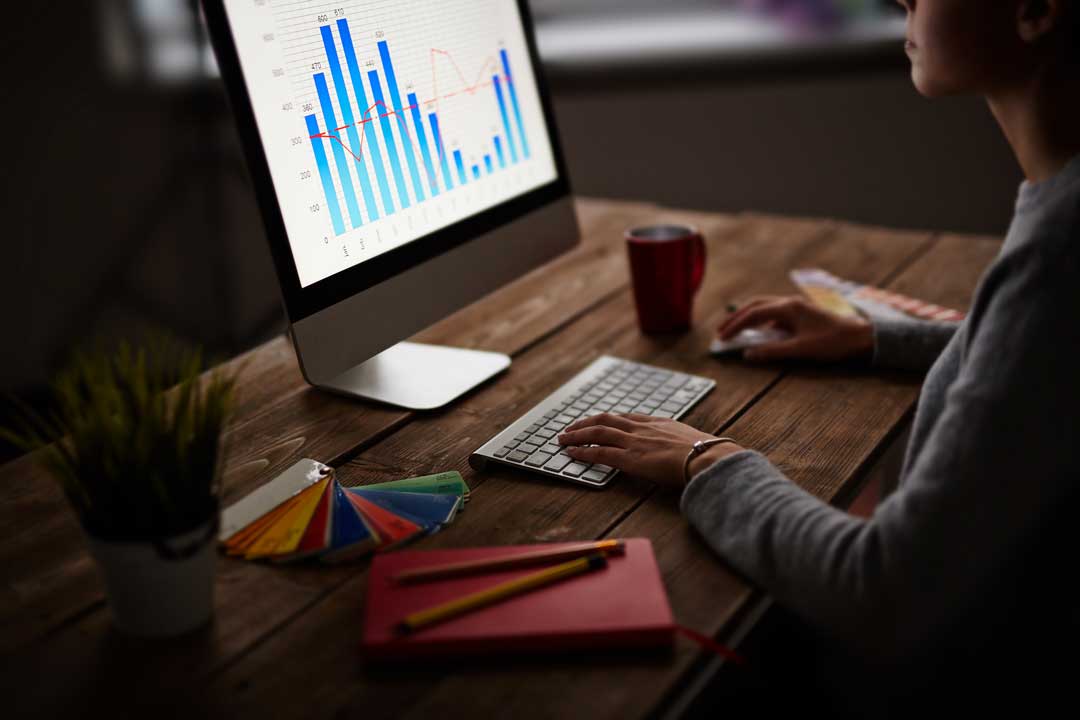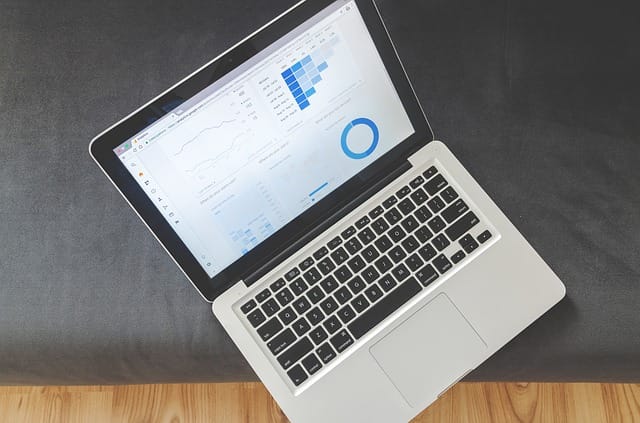Google Business Profile, formerly Google My Business, is invaluable to any local business. And as the tool evolves over time, Google rolls out new features to users that allow them to connect with audiences in new ways. Never was this more evident than during the Covid-19 pandemic, when lockdowns drastically changed the way in brands interacted with consumers.
Significant changes have come and gone since — including the transition to the new GBP moniker — but a few smaller modifications have flown under the radar — including one, in particular, that has caused some confusion since its inception.
If you’re among those GBP users who have been caught off-guard by Google’s recent change to how a view is counted within the platform, don’t sweat it…
We’ve got you!
WHAT ARE GBP views & WHY ARE THEY important?
As the name implies, the views metric reflects the number of time your Google Business Profile was viewed by someone on Google Search and Google Maps, and the total includes both those users who did and did not engage the listing to land on your business’ website.
Think of views as the digital equivalent to the number of eyeballs on your TV ad or set of ears that hear your radio spot.
The rule of thumb is, the more views generated by your GBP listing, generally, the more visible your brand is within Google Search and Google Maps to the people who are looking for your product or service. This results in more opportunities to acquire new customers and/or engage with existing customers.
GBP Views: then & now
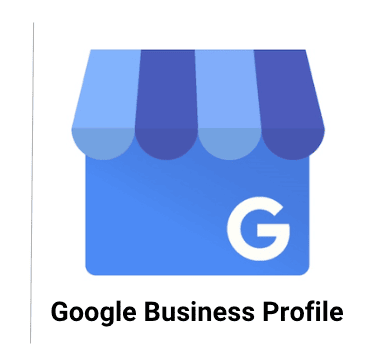 Now that we have established what views are inside the Google Business Profile platform, let’s dig into how they were calculated for years versus how they’re calculated in the wake of the recent change.
Now that we have established what views are inside the Google Business Profile platform, let’s dig into how they were calculated for years versus how they’re calculated in the wake of the recent change.
GBP Views Then
Google Business Profile views, in the olden days (in other words, prior to 2023), were operating straight out of the Wild Wild West.
For years, every time your listing appeared on someone’s screen, regardless of device, a unique view was counted. It didn’t matter if the same user viewed your listing 100 times in a day. It didn’t matter if 99 of those times were the result of that user feverishly zooming in and out for no reason on a certain portion of Google Maps from their mobile device of choice. At the end of the day, that one person was responsible for a ton of views displayed within your Google dashboard, most of which — if not all, in this case — were absolute garbage.
It did nothing to tell you an accurate story of how your GBP listing was performing — and you were probably left wondering why more meaningful activity, such as phone calls or visits to your brick-and-mortar storefront, wasn’t materializing.
GBP Views now
In February of this year, Google announced that it had come to its senses, realizing that its old way of calculating views was idiotic, at best.
Users can take comfort in the fact that views are being assessed in a manner that should have always been the case. With the change, views on Google Search and Google Maps are now measured as the number of times your profile is shown to a unique user within the span of 24 hours. No more mysteries. No more bad data. No more restless nights for business owners or hair-yanking episodes for SEO strategists (like us).
Just clean, pure, unadulterated data!
More specifically, when it comes to a view on Google Maps, which can show dozens of listings clustered together in one map, only when a user physically clicks on your profile is a view registered.
Let’s take a look at this in action:
Prior to Google’s change, this search for internet marketing near me on Google Maps would’ve resulted in a Maps view for each of the businesses shown — including those that have absolutely nothing to do with marketing.
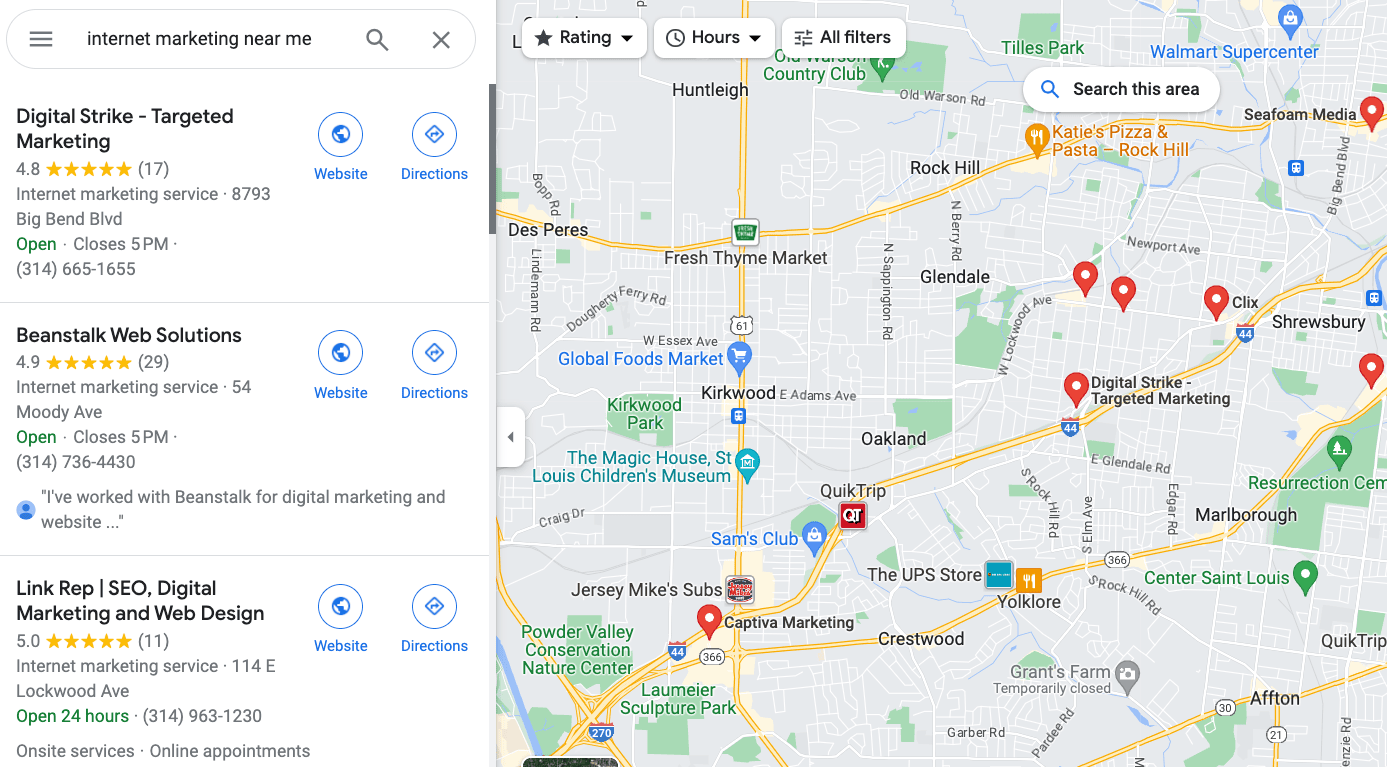
Compare that scenario with what is shown below, in which Digital Strike is the only profile to receive a Maps view for the same search. This is because the profile itself was clicked, whereas the others were not.
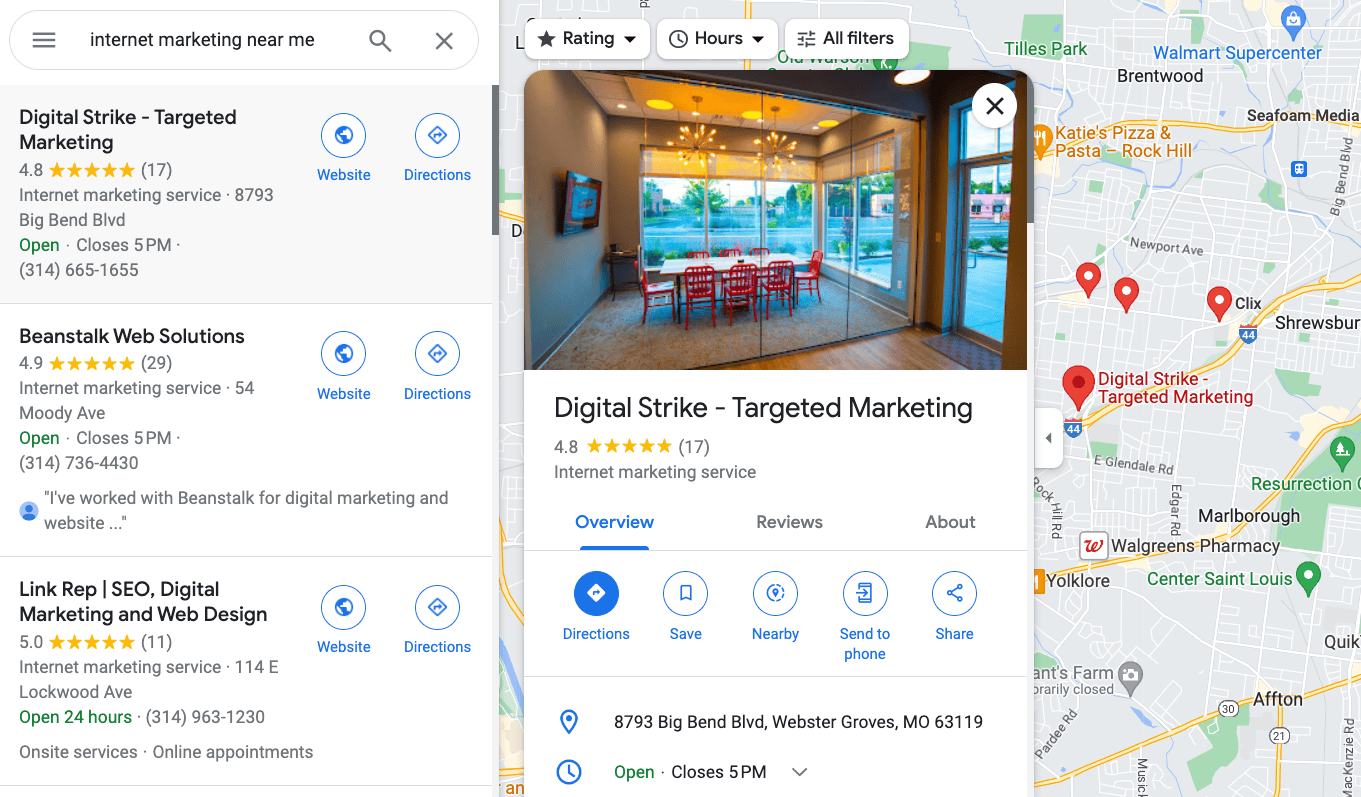
How Does This Update AFFECT MY BUSINESS?
It will affect you in a number of ways, and they’re all good!
But first, a simple warning: Don’t be alarmed if (or when) when you see a sudden dip in GBP views within whatever reporting platform you use, including the GBP dashboard. This is to be completely and utterly expected, and it’s absolutely no reason to panic; actually, it’s plays right into the good stuff.
With this update having ushered the way views should have always been reported, you are now equipped with much more reliable data when assessing the performance of your GBP listing and its impact on your business’ marketing efforts.
Inherent to this is fact that the change makes user intent easier to gauge. For example, consider the scenario below using internet marketing near me search used in the previous section.
Someone in the St. Louis area needs internet marketing help. During the course of their search, they come across the GBP listings of several area digital marketing agencies, including Digital Strike, both on Google Search and Google Maps. After diligently researching each agency — which consists of viewing the listing of the same four agencies across Search and Maps — the individual decides to partner with the wonderful team at Digital Strike (THANK YOU!) later that same day.
Previously, this customer journey would have potentially resulted in a large volume of views across Search and Maps, therefore skewing the true intent behind the person’s search behavior.
Now, with that same customer journey capable of generating only one view each for Search and Maps for each agency, not only is the data cleaner for those agencies that were considered — especially Digital Strike! — but those agencies that were not considered by the individual won’t have the irrelevant views data mucking up their reporting.
key takeaways
This Google change is long overdue, and its benefits cannot be overstated.
As the owner of a Google Business Profile listing — or set of listings, if you have multiple business locations — you will likely see some volatility in the views your listings are generating, as well as some year-over-year trends that don’t seem all that savory. But again, do not worry!
We assure you that this change is the way things should been all along, so let’s rejoice together.
While we’re at it, let’s also talk about the bigger picture, because knowing how to accurately read your GBP data is only half the battle. You also need the tips and tricks of how to arm your GBP listing to rank consistently well for your business’ most important keyword searches.
Having issues with optimizing your online presence, specifically when it comes to your Google Business Profile? Digital Strike can help answer any questions you may have. Our team of SEO experts has years of experience optimizing GBP listings, helping businesses of all sizes increase online visibility and engage with customers effectively.













